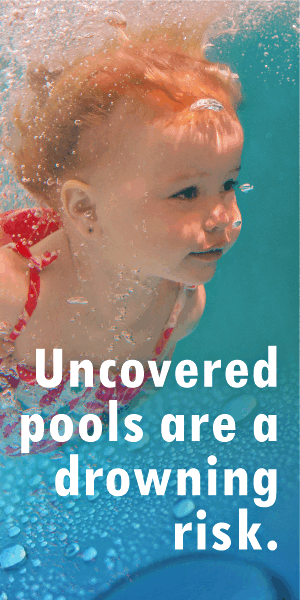As the world quiets down and little ones drift off to sleep, many parents find themselves in the glow of their screens, typing out their latest concerns and questions. The age of instant information has made it easy for parents to seek answers in the middle of the night. Kelly Eyre, Quality and Pedagogy Lead at Dibber International Preschools explores the top eight concerns keeping South African parents of children under six awake and offers insights and advice to ease those worries. Developmental Milestones Every parent wonders if their child is on track with their development. From the first words to taking those initial steps, concerns about whether a child is meeting milestones can be overwhelming. Parents often compare their children’s progress to others, which can fuel anxiety, especially when extended family or community members express concern. It’s crucial to remember that every child develops at their own pace, and there is a wide range of what is considered normal. However, if you’re concerned about your child’s development, it’s important to consult with professionals, including paediatricians, early childhood educators, and therapists. Teachers and managers of schools and early childhood centres can also provide valuable insights into your child’s progress and suggest activities to support their development at home. Health and Nutrition In South Africa, where access to healthcare can vary widely, parents may worry about whether their children are getting the right nutrients or are healthy. Concerns often centre around ensuring a balanced diet, understanding the importance of specific nutrients, and knowing how to handle common childhood illnesses like colds or fevers. South African parents may also face challenges related to food security and access to nutritious foods. It’s essential to offer a variety of foods and encourage healthy eating habits from an early age. Consulting with healthcare professionals, such as paediatricians and nutritionists, can provide reassurance and guidance. Understanding the local healthcare system and having access to emergency services or local clinics can also help parents manage health concerns more effectively. Education and Learning With the country’s diverse education system, parents often worry about giving their children a good start. Questions about the best early childhood education options, how to encourage a love of learning, and whether they’re doing enough at home are common. The country’s unique blend of public, private, and home-schooling options can make this decision even more complex. To support your child’s early education, consider engaging with teachers and school administrators to understand the curriculum and how you can complement learning at home. Creating a stimulating environment through educational toys, books, and interactive play can also nurture a love of learning. Remember, the goal is to foster a supportive learning environment that encourages curiosity and exploration, regardless of the formal schooling path chosen. Behavioural Issues Tantrums, picky eating, and bedtime struggles can cause sleepless nights for many parents. These common behavioural issues often lead parents to search for solutions and advice on managing these challenges without resorting to harsh discipline. Finding a balanced approach can be challenging in South Africa, where different cultural norms and parenting styles exist. Positive parenting techniques, such as using time-outs, setting clear boundaries, and offering choices, can help manage these behaviours. Understanding developmental stages and the reasons behind certain behaviours can also provide context and reduce frustration. Engaging with professionals, including paediatricians and child psychologists, can offer strategies tailored to your child’s needs. Additionally, teachers and caregivers can provide insights into your child’s behaviour in different settings and suggest consistent approaches across home and school environments. Safety Concerns In a country with diverse social and economic landscapes, safety is a top priority parents. Concerns often revolve around childproofing the home, road safety, and teaching children about stranger danger and personal safety. Given the country’s unique context, parents may also worry about neighbourhood safety, access to safe play areas, and emergency preparedness. To address these concerns, parents can take practical steps such as installing safety gates, securing hazardous items, and teaching children basic safety rules like not talking to strangers and understanding emergency contact information. Additionally, it’s beneficial to familiarize yourself with local safety resources and community support systems, including neighbourhood watches and emergency services. Schools and early childhood centres often have safety protocols in place, so engaging with teachers and administrators can also provide peace of mind and ensure consistent safety practices. Screen Time and Technology In our digital age, parents often worry about the impact of screen time on their young children. The prevalence of smartphones, tablets, and TVs has made it challenging to limit exposure, leading to concerns about the appropriate amount of screen time and its potential effects on development. South African parents may also face the challenge of balancing educational content with entertainment. Experts recommend that children under two years old should avoid screens altogether, and for older children, screen time should be limited to high-quality, educational content. Co-viewing programs with your child and discussing the content can enhance their understanding and learning experience. Encouraging other activities, such as outdoor play, reading, and creative arts, can provide a balanced approach to technology use. Schools and early childhood programs can also guide appropriate technology use, ensuring that it complements rather than dominates a child’s day. Socialisation and Friendships Parents frequently worry about their child’s social development, especially if they are shy or reserved. Common concerns include questions about making friends, attending playdates, and developing social skills. In South Africa’s culturally diverse context, parents may also consider how to expose their children to different languages and customs. Encouraging interaction with peers through playdates, preschool, and community events can help children develop social skills and build friendships. Participating in group activities, such as sports, dance, or cultural programs, can also foster social development and a sense of belonging. Parents can model positive social behaviour by demonstrating good manners, empathy, and effective communication. Additionally, teachers and early childhood educators can provide feedback on your child’s social interactions and suggest ways to support their development both in and out of the



































